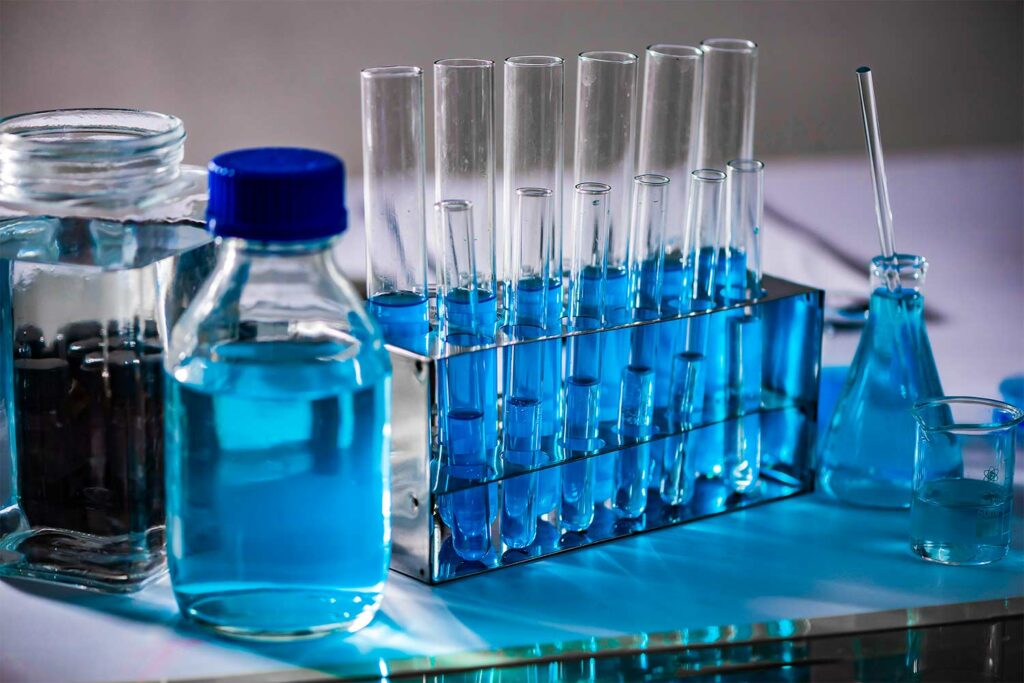Introduction
Five Mind Numbing Facts About Neopentyl Glycol Properties.Neopentyl Glycol (NPG) is a fascinating chemical compound that has captivated the attention of scientists, engineers, and industries worldwide. Its unique properties and versatility have led to its widespread use in a variety of applications, making it an indispensable component in numerous products we encounter daily. In this article, we will explore the captivating world of Neopentyl Glycol and uncover the mind-numbing facts that make it stand out among other chemical compounds. From its molecular structure to its applications and even potential future innovations, NPG has a lot to offer. So, let’s embark on a journey to unravel the mysteries and delve into the intriguing properties of Neopentyl Glycol!
What is Neopentyl Glycol (NPG)?

Neopentyl Glycol, commonly referred to as NPG, is a remarkable polyhydric alcohol that holds a significant place in the realm of chemical compounds. With its molecular formula C5H12O2, NPG belongs to the family of aliphatic diols and is renowned for its exceptional stability and versatility. This colorless, white crystalline solid exudes a faint characteristic odor, and its intriguing properties have earned it a vital role in various industrial sectors.
The synthesis of Neopentyl Glycol involves a meticulous and multistep process, starting from the reaction of formaldehyde and isobutyraldehyde. This process yields a high-purity compound, making it suitable for an array of applications. As a key building block in the production of resins, coatings, plasticizers, and lubricants, NPG has cemented its position as a fundamental ingredient in modern manufacturing processes.
Beyond its chemical prowess, Neopentyl Glycol’s non-toxic nature and environmentally friendly characteristics add to its appeal in applications where safety and sustainability are paramount. Its stability in heat and resistance to ultraviolet light make it a preferred choice for outdoor applications, ensuring durability and performance in varying environmental conditions.
Chemical Properties of NPG
Molecular Formula and Weight
The molecular formula of Neopentyl Glycol is C5H12O2, and its molar mass is approximately 104.15 g/mol.
Boiling Point and Melting Point
NPG has a boiling point of around 215-217°C and a melting point of approximately 124-128°C.
Solubility
Neopentyl Glycol is sparingly soluble in water but dissolves readily in various organic solvents.
Density
The density of NPG is about 0.978 g/cm³.
Vapor Pressure
NPG exhibits a low vapor pressure, making it suitable for applications requiring stability in varying temperature conditions.
Stability
Neopentyl Glycol is known for its exceptional stability, even when exposed to heat and light, which ensures its effectiveness in various applications.
Physical Properties of NPG
Appearance
NPG appears as a white crystalline powder or flakes, enhancing its purity and usability.
Odor
Neopentyl Glycol possesses a faint characteristic odor, which is generally considered negligible in most applications.
Color
The compound is colorless, which is desirable in many industries to avoid any unwanted discoloration in the final products.
Purity
NPG is commercially available in high purity, ensuring consistent and reliable performance.
Crystal Structure
The crystal structure of Neopentyl Glycol contributes to its stability and non-reactive nature in many chemical processes.
Production Process of Neopentyl Glycol
The synthesis of Neopentyl Glycol involves a multistep process that starts with the reaction of formaldehyde and isobutyraldehyde. The subsequent purification steps lead to the formation of pure NPG.
Applications of NPG
Resins and Coatings
NPG is a key component in the production of high-performance resins and coatings, widely used in the paint and coatings industry.
Plasticizers
The compound acts as an excellent plasticizer, improving the flexibility and durability of plastics.
Lubricants and Greases
NPG’s stable properties make it suitable for use in lubricants and greases, ensuring smooth and efficient mechanical operations.
Alkyd Resins
Neopentyl Glycol is a fundamental building block for alkyd resins, commonly employed in the production of paints and varnishes.
Advantages of Neopentyl Glycol

Stability in Heat and Light
NPG’s inherent stability allows it to withstand high temperatures and exposure to ultraviolet (UV) light without degrading, making it ideal for outdoor applications.
Low Volatility
The low vapor pressure of NPG ensures reduced volatility, contributing to the longevity of the products it is used in.
Non-Toxicity
Neopentyl Glycol is considered non-toxic, adding to its appeal in various applications, including those involving food contact.
Environmentally Friendly
Due to its non-toxic nature and low emissions, NPG is environmentally friendly, aligning with sustainable practices.
Disadvantages of Neopentyl Glycol
High Cost
One of the drawbacks of Neopentyl Glycol is its relatively high cost compared to other chemical compounds.
Limited Water Solubility
NPG’s limited solubility in water can present challenges in certain formulations.
Limited Availability
The availability of NPG may be restricted in some regions, impacting its accessibility in global markets.
Safety Precautions for Handling NPG
Protective Gear
When handling Neopentyl Glycol, it is essential to wear appropriate protective gear, including gloves and safety goggles.
Proper Storage
NPG should be stored in sealed containers, away from direct sunlight and extreme temperatures, to maintain its stability.
Handling Procedures
Following proper handling procedures and guidelines is crucial to ensure the safe use of NPG in various applications.
Neopentyl Glycol Properties:Neopentyl Glycol in Research and Development
The fascinating properties of Neopentyl Glycol (NPG) have not only made it a sought-after compound in various industries but also piqued the curiosity of researchers and scientists in the field of research and development (R&D). As technology and innovation continue to advance, NPG’s unique characteristics have sparked interest in exploring its untapped potential and discovering new applications.
In the realm of R&D, scientists are continually delving into the molecular structure of NPG, seeking to understand its behavior at the atomic level. This deeper comprehension opens up possibilities for synthesizing derivatives and modified versions of NPG, each with specific attributes tailored to diverse applications. By harnessing the compound’s stable and non-toxic nature, researchers are exploring novel avenues for greener and more sustainable solutions in various sectors.
One significant area of focus is the development of advanced materials. Neopentyl Glycol’s use as a building block in the production of high-performance resins has inspired researchers to create new formulations with enhanced mechanical and thermal properties. These advanced materials find applications in aerospace, automotive, and construction industries, where strength, durability, and resistance to environmental factors are crucial.
Conclusion
In conclusion, Neopentyl Glycol (NPG) stands as a true marvel in the world of chemical compounds, captivating researchers, industries, and innovators alike. Its unique properties, ranging from exceptional stability to non-toxicity and environmental friendliness, have positioned it as a versatile and sought-after component in various applications.
Through our exploration, we have uncovered mind-numbing facts about NPG, delving into its molecular structure, physical characteristics, and its role in the synthesis of essential materials like resins, coatings, and lubricants. Its remarkable stability in heat and resistance to UV light make it a dependable choice in outdoor applications, ensuring durability and longevity in challenging environments.
Moreover, the compound’s presence in research and development has sparked curiosity and driven scientists to unlock its full potential. From advanced materials to biotechnological applications and sustainable solutions, NPG continues to astound with its boundless possibilities.
Despite its advantages, Neopentyl Glycol is not without limitations. Its relatively higher cost and limited water solubility present challenges that researchers and industries are actively addressing.
FAQs
- What are the main applications of Neopentyl Glycol?
Neopentyl Glycol finds applications in resins, coatings, plasticizers, lubricants, and alkyd resins. - Is Neopentyl Glycol safe for the environment?
Yes, NPG is considered environmentally friendly due to its non-toxic nature and low emissions. - Why is Neopentyl Glycol preferred in outdoor applications?
NPG’s stability in heat and light makes it an excellent choice for outdoor use, as it can withstand harsh environmental conditions. - What are the safety precautions for handling Neopentyl Glycol?
When handling NPG, it is essential to wear protective gear, store it properly, and follow appropriate handling procedures. - Can Neopentyl Glycol be used in the food industry?
Yes, due to its non-toxic nature, NPG can be used in applications involving food contact with proper adherence to safety guidelines.



